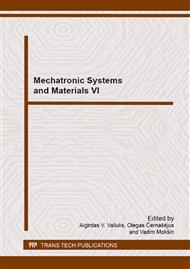p.864
p.871
p.875
p.881
p.887
p.892
p.898
p.905
p.911
Influence of Temperature Change on the Energy Parameters during Round Bars Rolling Process
Abstract:
The paper presents results of experimental studies on the effect of non-uniform temperature distribution over the metallic charge length on the energy parameters change during round bars rolling process. Experimental tests were conducted on the D370 Continuous Shape Mill in industrial works. From the tests carried out, it has been found that the main cause of occurrence of the non-uniform distribution of temperature over the charge length is the process of heating the metallic charge in the walking beam furnace. During rolling of bars from metallic charge with non-uniform temperature distribution over its length, changes in friction conditions in the zone of contact between the band and the rolls and in the plastic properties of steel being rolled occur. For decrease temperature during metallic charge rolling process about 100 °C (Fig. 2) in walking beam furnace, increase of rolling torque and total rolling power about 30% during rolling process metallic charge in first continuous shape mill stand was observed.
Info:
Periodical:
Pages:
887-891
Citation:
Online since:
January 2015
Authors:
Price:
Сopyright:
© 2015 Trans Tech Publications Ltd. All Rights Reserved
Share:
Citation:


